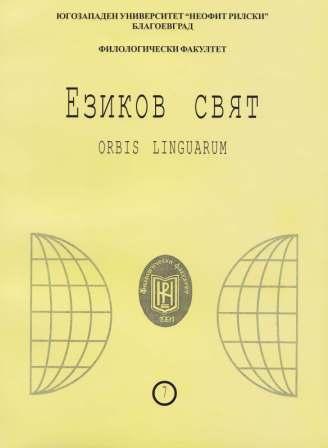ЗА НЯКОИ СПЕЦИФИКИ НА ЖЕСТОМИМИЧНИЯ ЕЗИК, ИЗПОЛЗВАН ОТ СЛУХОВОУВРЕДЕНИ ЛИЦА
ON SOME SPECIFIC FEATURES OF THE SIGN LANGUAGE USED BY CHILDREN WITH HEARING DISORDERS
Author(s): Pavlina Butseva, Krasimira Angelova ChakarovaSubject(s): Language and Literature Studies
Published by: ЮГОЗАПАДЕН УНИВЕРСИТЕТ »НЕОФИТ РИЛСКИ«
Summary/Abstract: The paper is dedicated to some characteristic features of the sign language, used by deaf and hard of hearing people. It is emphasized that unlike metalanguage elements (gestures), accompanying the verbal speech of the «speaking people », the kinetic signs of the speech of the deaf and hard of hearing people are language signs. They enter into complex relationships with each other, expressing certain lexical and grammatical, and emotional and evaluating meanings, and can serve a nominative function, i.e. to name different entities from the extralinguistic reality. The specifics of making grammatical meanings explicit in the cinematic language— which are the reason for a number of deviations in the writing practice of the people with a hearing defect—are accentuated.
Journal: Езиков свят - Orbis Linguarum
- Issue Year: 2009
- Issue No: 1
- Page Range: 73-79
- Page Count: 7
- Language: Bulgarian

